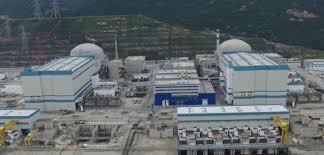
Breaking News
 NonConformist Series: Practical Wealth - Join us virtually Dec 29-30, 2025
NonConformist Series: Practical Wealth - Join us virtually Dec 29-30, 2025
 New bill would allow private citizens to fight cartels: 'WE ARE UNDER ATTACK'
New bill would allow private citizens to fight cartels: 'WE ARE UNDER ATTACK'
 Carnivore Got Me 90% There. This One Drink Changed Everything
Carnivore Got Me 90% There. This One Drink Changed Everything
Top Tech News
 Perfect Aircrete, Kitchen Ingredients.
Perfect Aircrete, Kitchen Ingredients.
 Futuristic pixel-raising display lets you feel what's onscreen
Futuristic pixel-raising display lets you feel what's onscreen
 Cutting-Edge Facility Generates Pure Water and Hydrogen Fuel from Seawater for Mere Pennies
Cutting-Edge Facility Generates Pure Water and Hydrogen Fuel from Seawater for Mere Pennies
 This tiny dev board is packed with features for ambitious makers
This tiny dev board is packed with features for ambitious makers
 Scientists Discover Gel to Regrow Tooth Enamel
Scientists Discover Gel to Regrow Tooth Enamel
 Vitamin C and Dandelion Root Killing Cancer Cells -- as Former CDC Director Calls for COVID-19...
Vitamin C and Dandelion Root Killing Cancer Cells -- as Former CDC Director Calls for COVID-19...
 Galactic Brain: US firm plans space-based data centers, power grid to challenge China
Galactic Brain: US firm plans space-based data centers, power grid to challenge China
 A microbial cleanup for glyphosate just earned a patent. Here's why that matters
A microbial cleanup for glyphosate just earned a patent. Here's why that matters
 Japan Breaks Internet Speed Record with 5 Million Times Faster Data Transfer
Japan Breaks Internet Speed Record with 5 Million Times Faster Data Transfer
China Starts Operating Most Powerful Single Nuclear Reactor

The main design objectives of the third generation EPR design are increased safety while providing enhanced economic competitiveness through improvements to previous PWR designs scaled up to an electrical power output of around 1650 MW (net) with thermal power 4500 MW. The reactor can use 5% enriched uranium oxide fuel, reprocessed uranium fuel or 100% mixed uranium plutonium oxide fuel. The EPR was designed to use uranium more efficiently than older Generation II reactors, using approximately 17% less uranium per unit of electricity generated than these older reactor technologies.
The first two EPR units to start construction, at Olkiluoto in Finland and Flamanville in France, are both facing costly delays (to at least 2020). Construction commenced on two Chinese units at Taishan in 2009 and 2010. Taishan 2 is expected to begin operation in 2019. Two units at Hinkley Point in the United Kingdom received final approval in September 2016 and are expected to be completed by 2025.
There are new EPR redesigns which will allow for simpler and faster construction.

 Aluminum Causes Brain Damage
Aluminum Causes Brain Damage Advanced Propulsion Resources Part 1 of 2
Advanced Propulsion Resources Part 1 of 2

